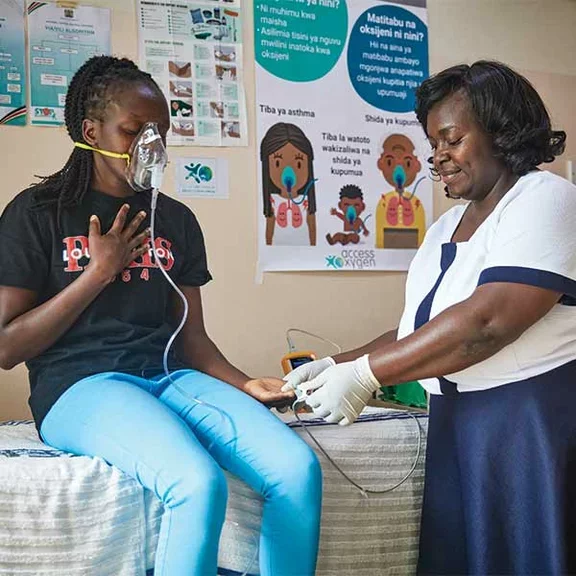Oxygen saves lives – yet half of the world’s population has no access to medical oxygen.
As a major player in the healthcare sector worldwide for 60 years, Air Liquide has leveraged on its long-term expertise in medical oxygen supply to create a social impact program – Access Oxygen™ – to make medical oxygen available in rural areas in low- and middle income countries. Since the launch of the program, 2 million people in Senegal, South Africa and Kenya have gained access to oxygen. And the work continues: our ultimate goal is to develop access to oxygen in more countries in Africa but also in Asia and Latin America.
Conversation with Dr Bernard Olayo, founder of Centre for Public Health and Development (CPHD), Kenya
Doctor, what is CPHD and what is your role?
CPHD is an NGO and our mission is to address the main health challenges that can be fatal for women and children. We bring innovative solutions to public health challenges in the Eastern African region and work with partners with whom synergies exist toward this goal.
Can you give us an example of when medical oxygen is vital in saving lives?
A particularly dangerous illness is childhood pneumonia. Each year it kills around 800,000 children under the age of five worldwide(1). Most deaths are concentrated in countries where incomes are low. That includes Kenya, where tragically we lose up to 6,000 children to the disease each year.
What lies behind that statistic?
In many cases, the medical issue is a lack of oxygen. Even when seriously ill children receive hospital treatment and the necessary antibiotics, around half of them will still die if oxygen is not available. Oxygen is also important for deliveries by Caesarian section and other maternal health services we need to deliver every day.
How has Access Oxygen™ made a difference?
While other programs serve some of the larger hospitals, Access Oxygen™ fills a vital gap because it is tailored to the needs of primary care – for example, the clinics serving small and often remote communities. Once these smaller facilities have oxygen, they can administer life-saving treatment to a sick child more quickly, without losing vital time travelling to a bigger facility.
And in practical terms, what does the support of Access Oxygen™ look like?
It means that these small primary care facilities can be equipped with a complete solution. So that comprises the oxygen cylinders, concentrators, pulse oximeters and regulators. And as importantly, Access Oxygen™ provides training for the healthcare givers, and supports the equipment with maintenance programs to ensure accuracy and reliability.
Why did you choose Access Oxygen™?
We have partnered with Access Oxygen™ teams because of the excellent work they had already done in Senegal. They bring valuable real-world experience of providing this support in other places and we have continuous interaction and share learnings. Their track record, and the equipment and materials they share, also means we can approach potential funders with a high degree of credibility. It was through leveraging their experience that we were able to make the solution in Kenya a reality.
What makes you most proud about this partnership?
The program has been transformative and we are saving the lives of many more seriously ill children. It is also inspiring to see health workers equipped to provide such a higher standard of care than I could, many years ago, as a doctor in rural areas.





